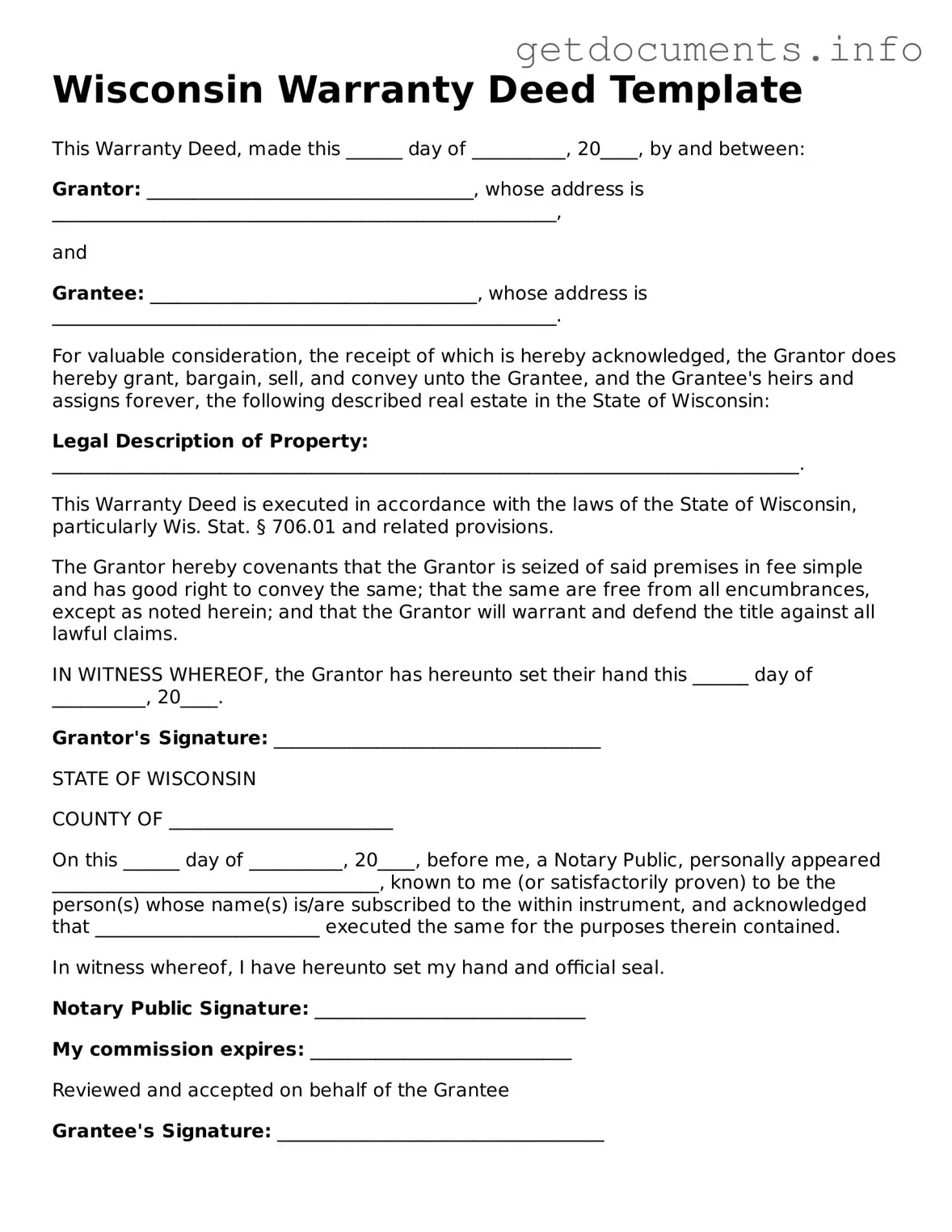Free Deed Template for Wisconsin
A Wisconsin Deed form is a legal document used to transfer ownership of real estate from one party to another within the state of Wisconsin. This form outlines essential details such as the names of the parties involved, the property description, and any conditions of the transfer. To ensure a smooth transaction, it is important to fill out this form accurately.
Start your property transfer process today by filling out the Wisconsin Deed form. Click the button below to begin.
Access Deed Editor
